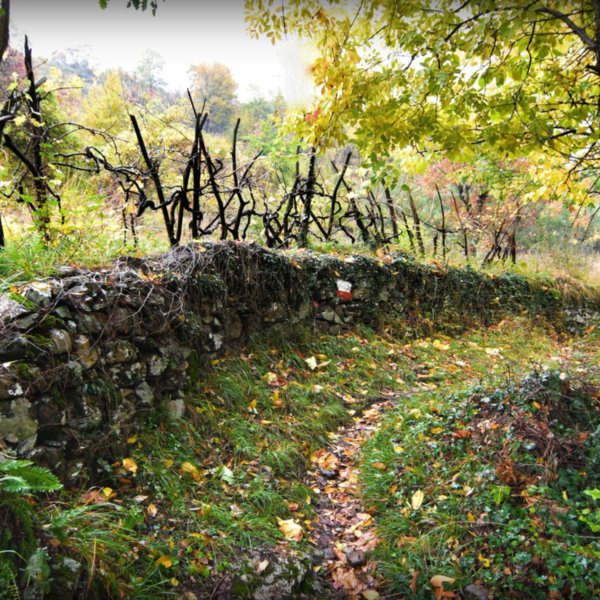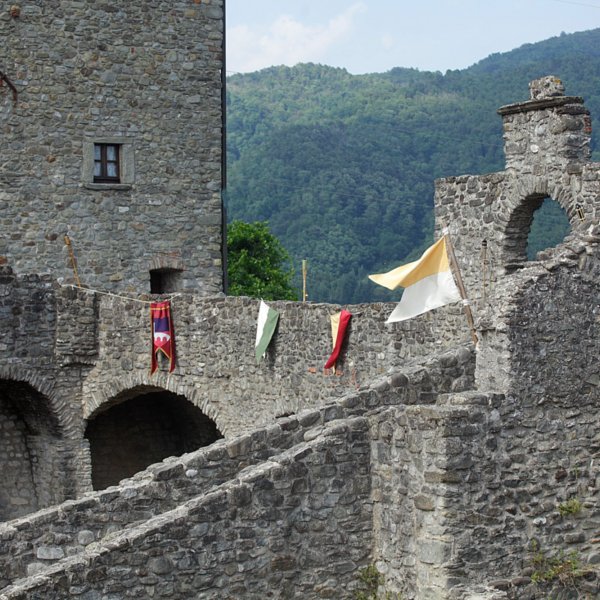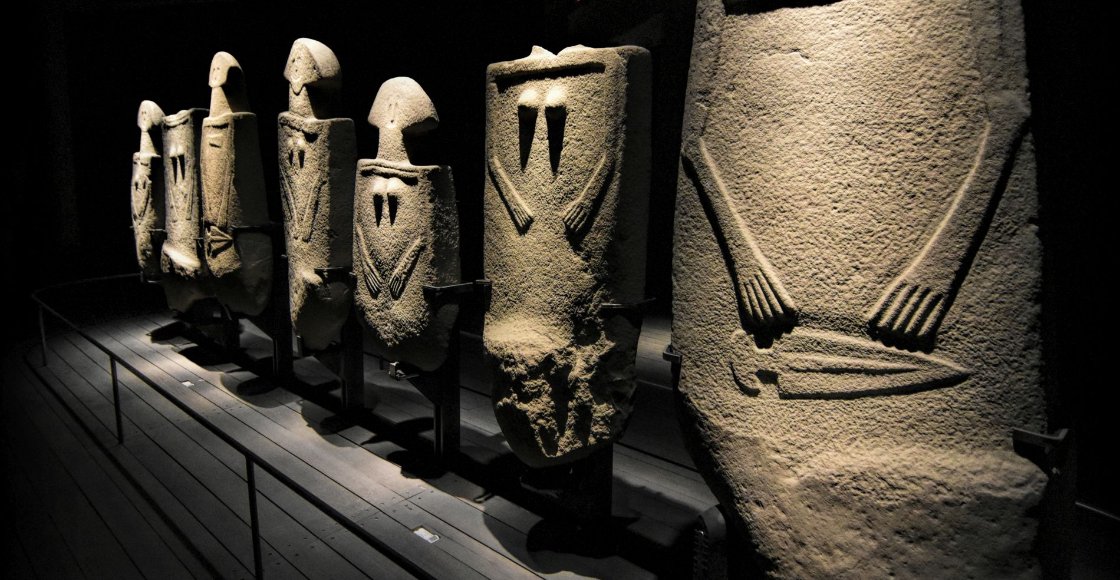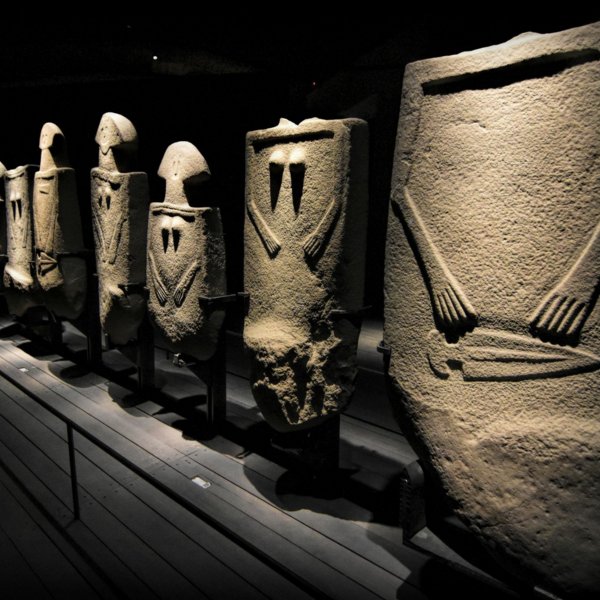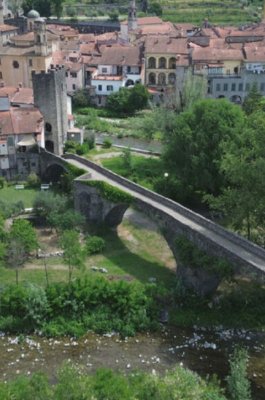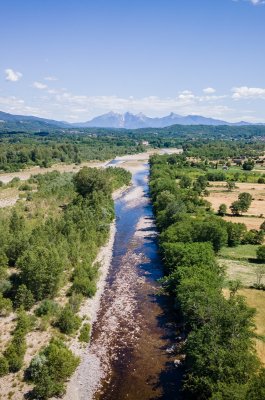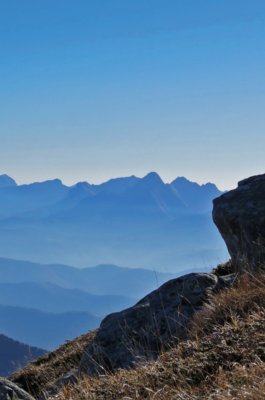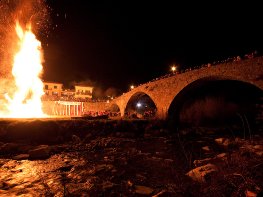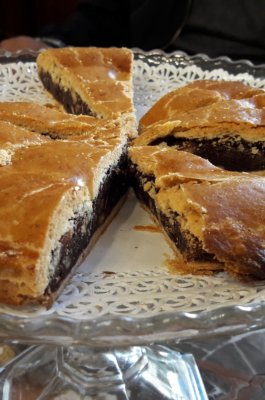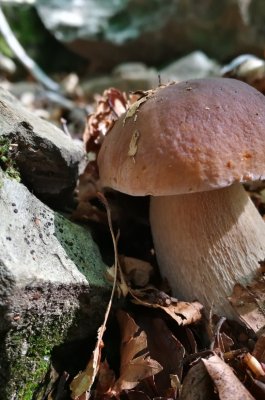A mountain pass located at the border that opens the gates to Tuscany from Emilia. Located at an altitude of about 3609 feet (1100 meters), this place historically represented an important transit point for pilgrims, merchants and wayfarers, a natural watershed between the Ligurian and Tuscan-Emilian Apennines. The landscape surrounding the Cisa Pass is characterized by thriving forests and wilderness, offering spectacular views.
Cisa is also known for the Sanctuary of Nostra Signora della Guardia, a place of worship that attracts numerous pilgrims each year. Built in neo-Romanesque and neo-Gothic style in the early 1900s, it is named after Our Lady of the Guard, the patron saint of athletes.
Coming down from the castle Piagnaro, you’ll arrive at the door and the bridge of Saint Francis. This Romanesque bridge has ancient origins, but has been restructured several times due to the various floods it endured; however, it still has a typical 14th-century structure. Known as the bridge of Cresa, it led to the church of Saint Francis. The church has a three-nave plan and houses a bas-relief depicting the Madonna and Child, attributed to Agostino di Duccio.
Piazza del Duomo is home to the Bishop’s Palace, which houses the Diocesan Museum, a collection of works from the churches and chapels of the territory. This piazza is separated from Piazza della Repubblica (home to the Palazzo Comunale) by the Great Bell Tower, which was part of the fortification structure that was commonly called “Cacciaguerra.” Built by Castruccio Castracani in 1322 to distinguish between the elevated Guelph area of the city and the Ghibelline area below, this barrier ran from the left side of the Verde to the Magra. In piazza della Repubblica, you can admire Palazzo Bocconi e Ruschi-Pavesi. Moving along the road, you’ll reach the lower heart of the medieval city known as “Immoborgo.” Below, the bridge of Saint Francis allowed for a connection between the Immoborgo and the countryside beyond the Verde, the church and monastery of Saint Francis. Re-entering the village, you’ll reach the tower of Castelnova, which was part of the defensive system of the city.
Just after crossing the Magra River, on your immediate right is the Church of Our Lady (or “Chiesa di Nostra Donna”), which is an intriguing example of Rococo architecture. It is also close to the Teatro della Rosa, which has origins dating back to 1739. In the small square to the left is the church of San Cristina, which houses precious paintings—a few more, in fact, than the Palazzi Petrucci and Damiani, which are adorned with frescoes of Natali and Antonio Contestabili.
Out on the edge of town, the Porta Fiorentina area was surrounded by walls, which still stand in places. Here you’ll find the Church of Saint Peter, which houses a bas-relief of an 11th or 12th century labyrinth. Carved in sandstone, this bas-relief is a symbol of the individual pilgrim’s spiritual journey.
Outside the old town of Pontremoli, is the church of St. George, which was probably built in the fifth century. The earliest records of this church include a document traced to Pope Gregory VII in 1078. Today, the apse of the church and a bell tower are the only things that remain.
Also worth seeing is the Cathedral and Diocesan Museum of Pontremoli. From 1787, the Church of St. Mary of the Assumption became the Cathedral of the Diocese of Pontremoli, thanks to a popular vote by the city. The Baroque interior has a Latin Cross plan, with a dome that dominates the intersection of the nave and side arms. The apse and presbytery are rich in golden stucco work, completed in 1760 by local artists. As with those that decorate the transepts and the nave, the golden stucco works were completed a century after the decoration above the perspective painting by Francesco Natali. Other works by Natali include two ceiling frescoes, both dating from the beginning of the 8th century. They depict the "Glory of St. Rose of Lima " and the "Glory of St Geminianus, ” two of the city’s primary protectors. In the central niche of the apse is the 14th-century wooden statue of the Madonna Enthroned with the Child, depicted in the 7th-century-style of Madonna of Loreto. In Pontremoli, the painting is venerated as the " Madonna del Popolo."
The Church of Saint James of Altopascio is also in Pontremoli, located in an area that was once a resting point for the Tau Knights of Altopascio. In 1508, the building was converted into a monastery for cloistered Augustinian monks, and in 1785, it became a convent for females. The present church—consecrated in 164—houses the blade of G. Bottani in the main altar, which depicts the Ascension. In side altars you’ll find a fresco depicting the Madonna of Perpetual Help and a painting of the Madonna with Child and Saints of the Senese School.











